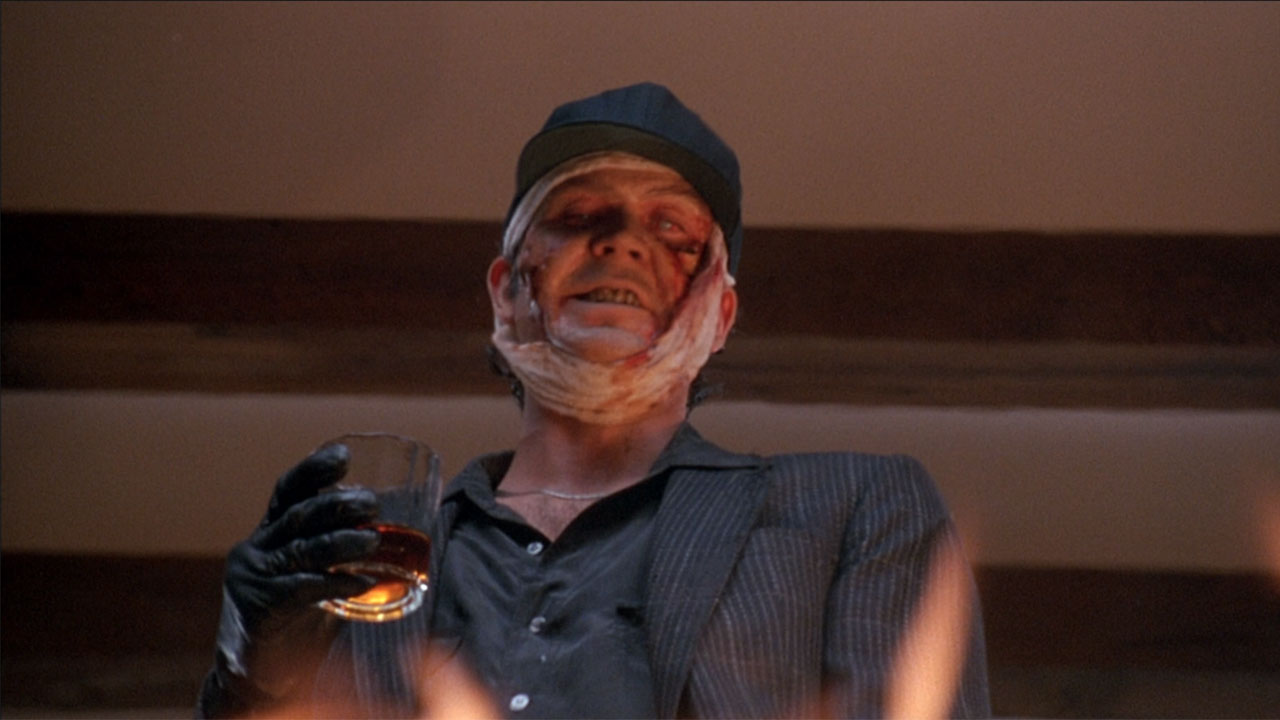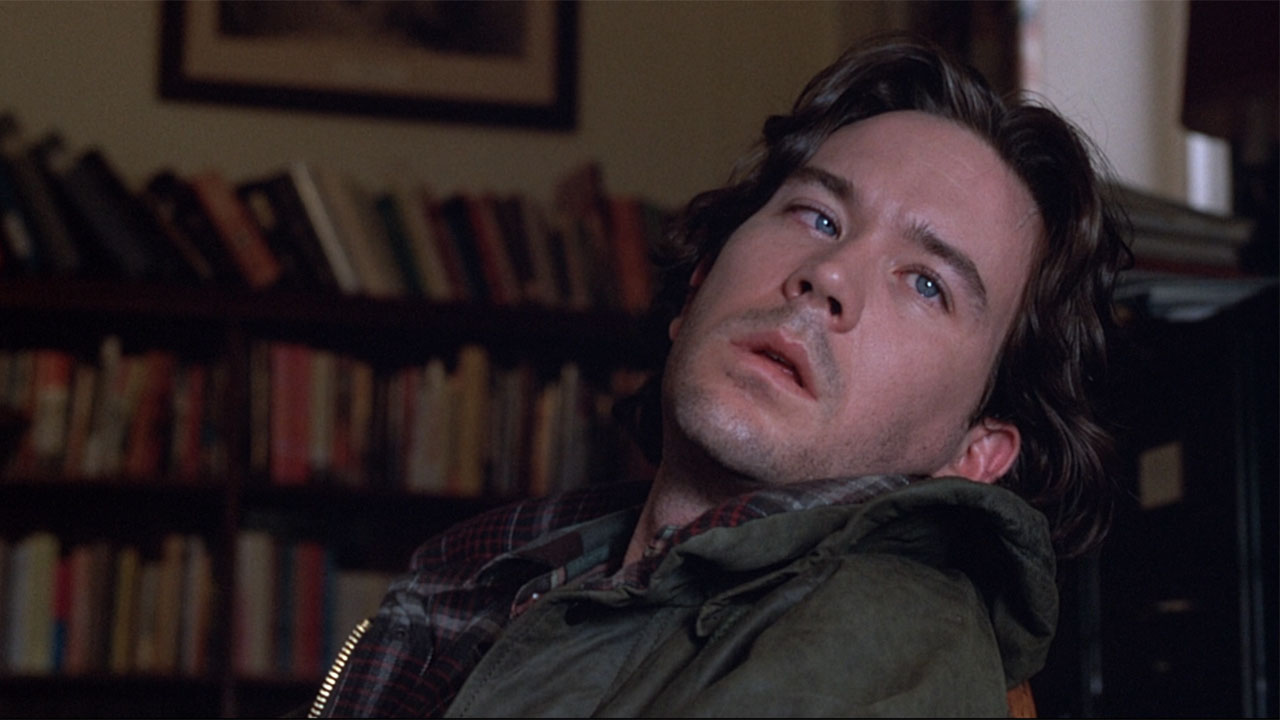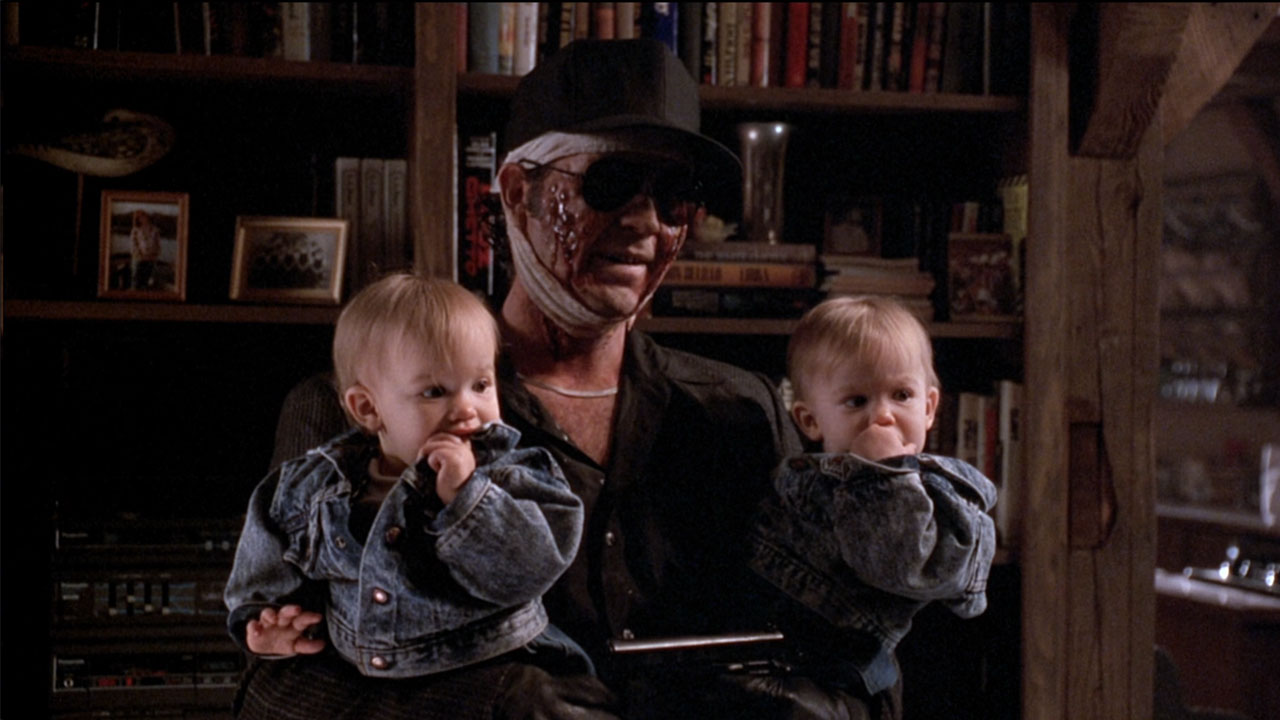Adapting Stephen King's The Dark Half: George Romero's 1993 Movie Tackles King's Take On Jekyll And Hyde
When Stephen King's alter ego was exposed, this is the story he imagined.

There is an alternate reality somewhere in the vast multiverse where Stephen King and George A. Romero are recognized as one of the all-time great author/filmmaker duos. In this world, their collaboration begins in the late 1970s when Romero successfully adapts Salem’s Lot into a big screen hit – the relationship further cemented when the two men have a joyful experience working together to make Creepshow. After the anthology comes an epic feature take on The Stand, and after making Creepshow 2 (which has a big enough budget to include “The Cat From Hell” as a fourth segment) they craft a traumatizing cinematic take on Pet Sematary, and successfully turn IT into a television event unlike anything audiences have ever seen.
Unfortunately, we live in a world where the heavy majority of those team-ups never happened. George Romero did do work developing every single one of those adaptations, but his directorial vision was only executed once (with 1982’s Creepshow). Salem’s Lot, The Stand, Pet Sematary and IT all had periods when Romero was attached to direct, but the movies/miniseries never got made – and he was even unavailable to helm Creepshow 2 when it rolled into production.
The real history of Stephen King and George Romero’s collaboration is one arguably more about what could have been rather than what is, but at the very least in 1993 the creatives were finally able to end their bad luck streak by actually getting an adaptation made. The Dark Half is a film that succeeded where many like it failed, and nearly 30 years after its release it stands up as one of the more underappreciated titles in King’s big screen history.
Being a Jekyll and Hyde story that comes equipped with an autobiographical twist, The Dark Half is a book in the Stephen King canon with a rich history and a wonderfully faithful film interpretation – and this week’s Adapting Stephen King does a deep dive into both.

What The Dark Half Is About
Back in August when I wrote about Paul Michael Glaser’s The Running Man and the history of Richard Bachman, I noted that Bachman “died” in 1985 of what Stephen King refers to as “cancer of the pseudonym” – but that’s just the jokey version of the truth. In actuality he was “assassinated” by Steve Brown, a bookstore clerk living in Washington DC.
Familiar with novels by both Stephen King and Richard Bachman, Brown felt there was a notable similarity in their prose, and he did a little digging to see if there was any more to the hunch than a gut feeling. Going to the Library of Congress, the bibliophile researched the copyright holders for each of the Bachman books, and while most of them were attributed to Kirby McCauley (King’s agent at the time), the novel Rage was the exception. That one had King himself listed as the man behind the controversial tome.
After Steve Brown sent the author a letter detailing the findings of his research, he expected a rebuttal, but what he got instead was acquiescence and an offer to do an interview – which was subsequently published in the Washington Post on April 9, 1985.
Your Daily Blend of Entertainment News
Since then, Stephen King has published two more novels as Richard Bachman – 1996’s The Regulators and 2007’s Blaze – but he has mostly let the identity go peacefully. With The Dark Half, however, the author imagines how the story may have had a much more sinister conclusion, along with a twist of the supernatural.
King’s surrogate in the 1989 novel is Thad Beaumont, a writer whom we are first introduced to as an 11-year-old who is suffering from painful migraines and auditory hallucinations (specifically the sound of thousands of sparrows). One October morning he is about to get on the school bus when he collapses in seizure and is rushed to the hospital. During emergency surgery, the cause of the symptoms is revealed to be a parasitic twin that has been growing in his brain – with surgeons discovering an eyeball, part of a nostril, three fingernails, and two teeth. Wanting to spare the boy and his family the horror of the reality, the doctor tells them that the operation merely removed a benign tumor.
As an adult, Thad Beaumont becomes a husband and a father of twin boys in addition to being a successful writer – though not under his own name. While the two books he has penned as himself were failures, the big bucks roll in from the publication of a gore-filled crime novel series that he writes under the pseudonym “George Stark”… or at least that’s the case until a “creepazoid” named Fred Clawson discovers the truth about the author and attempts to orchestrate a blackmail scheme.
Rather than pay Clawson a single cent, Thad and his wife, Liz, opt to go public with the news instead, and there is even a small publicity stunt organized with People magazine that sees the couple pose for a photograph in front of George Stark’s grave. Initially Thad feels unburdened by the ordeal and ready to start a new era of his career, but that’s before he learns that individuals who are connected to the big revelation are being brutally murdered, and that the suspect fits the description of the main character from Stark’s books.
The sheriff in the neighboring town of Castle Rock, Alan Pangborn, believes that Thad himself is responsible for the crimes, leaving the author the responsibility of convincing him otherwise by proving the existence of his dark half, understanding why George Stark exists, and banishing him for good.

How George A. Romero’s The Dark Half Differs From Stephen King’s Book
In case it wasn’t obvious, George A. Romero didn’t want to turn all of Stephen King’s books into movies because he wanted to change everything about them. The filmmaker saw the innate cinematic qualities in the work on the page, and he wanted to bring that vision to the big screen. This is evident in Creepshow, Creepshow 2, and Tales From The Darkside: The Movie, and it was clearly a driving philosophy in the making of The Dark Half.
Romero even says as much in plain terms on the director’s commentary track on the film’s Blu-ray, telling moderator Stuart “Feedback” Andrews,
I tried to be faithful when I set out to do it. I had adapted Michael Stewart’s novel Monkey Shines into a screenplay, but the moment I got involved with Steve… because we were buddies. He actually came in, before we ever started working together, he came in and did a little cameo in a film I made called Knightriders, and we started to talk about working together. So I felt I really have to be careful with this guy. I’m not going to try and put my mark on this; what I want to do is make what Steve wrote into a shorter form so that we can do it as a film. I liked what I did.
Putting the book and the movie side-by-side you see that George Romero accomplished his mission, as there is very little in the adaptation that is changed for feature length. There are some alterations, omissions, and combinations, but the work directly translates most of Stephen King’s work directly to the screen – right down to George Stark’s “High Toned Son Of A Bitch” bumper sticker.
Digging into the minutia, Romero’s The Dark Half makes a number of minor changes to the supporting cast. In the book, for example, Homer Gamache (Glenn Colerider) is merely the first victim of George Stark (Timothy Hutton), but for the adaptation his role is combined with that of Phyllis Myers, who is the photographer from People magazine (additionally, he has a prosthetic arm as written by King – but that probably would have made it difficult for the big screen counterpart to hold a camera, hence why he is given a prosthetic leg instead).
One of the very few “for the hell of it” changes is the gender swapping of the professor friend that Thad Beaumont (Timothy Hutton) has at the university where he works. In the book, it’s Rawlie DeLesseps, a male colleague who winds up providing Thad with the information about sparrows and psychopomps; for the film it’s Reggie Delesseps, a woman played by Julie Harris.
Really the only “significant” alteration in the narrative is the use of Dr. Pritchard (Larry John Meyers), the man who performs surgery on Thad when he is a pre-teen. He becomes one of George Stark’s many victims in the movie after the protagonist visits him at his office, but in Stephen King’s version the character isn’t even on the East Coast at the time of the murders, and never actually communicates with Thad. Instead, it’s Alan Pangborn (Michael Rooker) who reaches out to him while Pritchard is on vacation in Yellowstone National Park – and learning about the invasion of sparrows during the surgery helps the sheriff start to believe the crazy story about the homicidal alter ego.

Is It Worthy Of The King?
Given the phenomenal quality of Creepshow, George A. Romero’s clear passion for the work of Stephen King, and the number of dead ends that were hit before a “reunion” movie finally got made, one wishes that The Dark Half were a film of a quality to be recognized as one of cinema history’s great King adaptations. That is, sad to say, not really the case. Instead, its legacy is more as a well-made and faithful live-action take on one of the author’s B+ books.
It’s hard not to imagine what the film could have been like with either Gary Oldman or Willem Dafoe in the lead role (they were the top choices for the part), though Timothy Hutton does great work in what is a challenging dual role. His take on George Stark is bizarrely reminiscent of Michael Keaton, but it’s appropriately sinister and noxious nonetheless – and the work he does opposite himself in the third act is wonderfully natural. He additionally carries the movie well as Thad Beaumont, effectively illustrating his hatred and his appreciation of Stark’s existence.
The biggest issue with the movie is the same as the biggest issue of the book, which is a matter of total story coherence. Like Misery, there are prominent themes about the internal conflict of an author’s creative freedom versus expectations, but while Misery is a wholly grounded story, The Dark Half leans deeply into the supernatural – and one could argue too much so. There is an equation in the plot involving Thad’s parasitic twin, the psychic persona of George Stark, and the phenomena of the psychopomps, and the “mysteries of the universe” does a lot of heavy lifting in solving it by the end.
With this immensely faithful version in existence, The Dark Half now feels like it is a book that is in a prime position to be remade with some new ideas incorporated – but George Romero certainly did the material justice, and the film holds up well.

How To Watch George A. Romero’s The Dark Half
Those of you who are into physical media and now in the market for a Blu-ray copy of George A. Romero’s The Dark Half will discover an unfortunate truth after a brief search: the film has only been released in HD once domestically – published by Shout Factory in 2014 – and that set has gone out of print. It seems like a fair bet that another company will eventually distribute a new version, but until then you can easily find and watch the movie on digital platforms. It is presently streaming on Cinemax (meaning it is also available via add-ons for Hulu and Amazon), and you can both rent and purchase the film at most major online retailers (including AppleTV and Vudu).
Next week’s Adapting Stephen King will be a fun one, as I’ll be heading back to the CinemaBlend TV section and be breaking down the sheer insanity that is John Power’s The Tommyknockers – based on the 1987 novel of the same name. Look for it here on the site next Wednesday morning, and to further dig into the history of King adaptations you can find all of the previous installments of this column by clicking through the banners below!
























Eric Eisenberg is the Assistant Managing Editor at CinemaBlend. After graduating Boston University and earning a bachelor’s degree in journalism, he took a part-time job as a staff writer for CinemaBlend, and after six months was offered the opportunity to move to Los Angeles and take on a newly created West Coast Editor position. Over a decade later, he's continuing to advance his interests and expertise. In addition to conducting filmmaker interviews and contributing to the news and feature content of the site, Eric also oversees the Movie Reviews section, writes the the weekend box office report (published Sundays), and is the site's resident Stephen King expert. He has two King-related columns.
